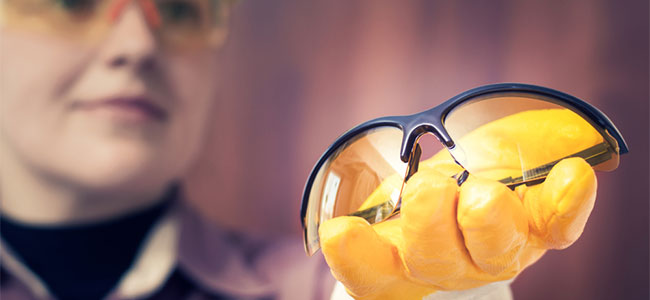
Vision: A Key Piece in the Safety Puzzle
Employers sometimes lose focus on vision protection when handling high-fatality dangers such as falls. Fortunately vision protection might be having its big moment.
- By Shane Foreman
- Sep 06, 2023
Safety in the industrial workplace has not been on the firmest footing in recent years. Factors such as COVID workplace restrictions, economically-induced consolidation of workforces, and a feeling that companies need to “catch up” for lost time have made the workplace environment fraught with accidents, some of them even fatal.
Jack Dennerlin, adjunct professor of ergonomics and safety at Harvard’s Department of Environmental Health and co-director of Work Health and Well-being: Achieving Worker Health at the Harvard T.H. Chan School of Public Health had this to say, “COVID-19 has stressed the system. All the flaws that have been in place are totally exposed and have come to the forefront of our daily conversations.” No, the pandemic hasn’t caused every safety ailment, but it did have a lasting ripple effect.
The Big Player in Safety Incidents
According to the Bureau of Labor and Statistics, there were 5,190 fatal work injuries recorded in the United States in 2021, and falls, slips, and trips in construction and extraction occupations accounted for 370 of these fatalities in 2021. Legal Jobs, a legal watchdog organization, says on their website that 36.5 percent of all deaths in the workplace occur as a result of employees falling.
While not all falls are fatal, they also top the list for non-fatal workplace accidents. According to the Centers for Disease Control, 18 percent of the 1,176,340 non-fatal work injuries in 2020 were related to slips, trips and falls.
These statistics rightly put an emphasis on preventing falls. According to the OSHA website section on fall protocol, “workplaces must provide fall protection at elevations of four feet in general industry workplaces, five feet in shipyards, six feet in the construction industry, and eight feet in long shoring operation.”
As a result, many companies implement physical fall protections and PPE, and adopt safe work practices and training to prevent serious falls.
But falls aren’t the only issue in the workplace. One overlooked area of bodily protection is right under our nose, or above our nose…as is the case: our eyes. Though eyewear has come a long way in the past 50 years, universal adoption rates are far from perfect. Most manufacturing and construction industries require their employees to wear protective eyewear, but studies show that is not always enforced.
This article originally appeared in the September 2023 issue of Occupational Health & Safety.